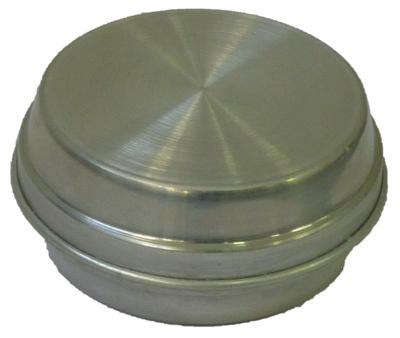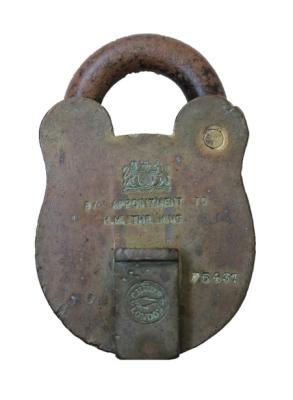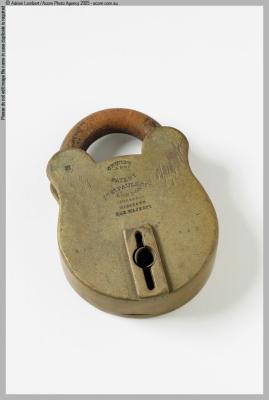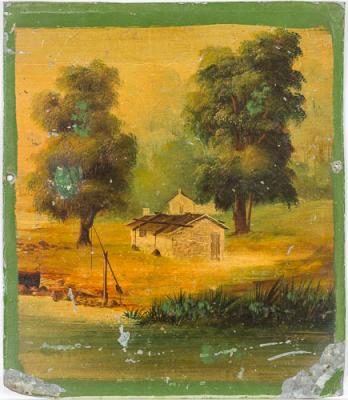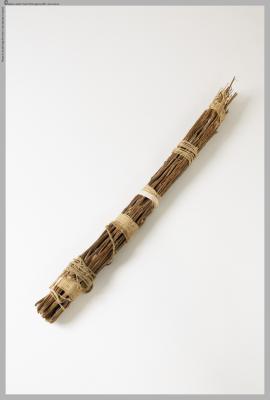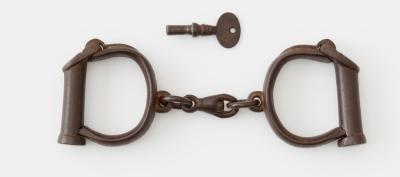PAINTING OF ABORIGINAL PRISONERS IN EXERCISE YARD
c. 1968 - 1989(a) Large, rectangular, acrylics on card or paper, painting of scene depicting six prisoners sitting under shelter in Division Yard (possibly 3 Div.) with Prison Officer watching from behind gate in background. In the left side of the painting, two prisoners with backs to viewers sit at end of long bench in front of right end of long table; they are arguing and both are turned towards each other and one is pointing in threatening manner to man alongside who is holding up his hand as if in appeasement. On the opposite side of the table are two prisoners, one looking over his shoulder towards the Officer behind the gate in the background, whilst a man beside him is leaning on the table and has half risen from his seat. At the opposite end of the table from the arguing men, another prisoner is sat at the table with his feet resting on the bench. His right elbow is on his right knee and his head is resting in his hand. Further along the table another prisoner sits on the bench with his back to table. He has a newspaper spread out over his crossed legs and his right hand points to the paper. He props himself up with his straight left arm and he is looking over towards the arguing men. In the background of the painting, on the ground near the Yard wall, sit a number of toilet buckets. On the reverse of the painting are two signatures in the bottom left hand corner. The signature is written twice; one horizontally and the other to the right of the first signature and at a downward angle. The letters are difficult to read and possibly contain the letters ' J O L' or 'B I N J A' or ' Y O L I N J A '. Or some combination of the above.
(b) Large, thin, rectangular, black wooden frame, with glass and wood board backing. It was the original frame for Painting 'Exercise Div. Yard' by unknown artist.
Donated by John Vodanovich in 1995. This painting is a scene from the 1980s, possibly of the 3 Division exercise yard. The estimated date of completion for this artwork is assisted by the lack of turnstile gate into the Main Cell Block (which was added after the 1988 riot) in the background, and the colour of the Prison Officer’s blue uniform in the painting, which was changed to a khaki colour around 1988 or 1989. When donated, the people depicted in this work were identified as Fremantle Prison inmates, and it is presumed that the men represented are also potentially the artists of this work, Revel Cooper, Reggie Moolarvie, and possibly Yaddabooka, an Aboriginal man from north-western Australia. The original ablution buckets are present in this painting, with concave sides and shown placed in their landing areas A, B, C, D etc. as indicated on wall and on the buckets. Cliff Frances, the donor's uncle, worked as a Prison Officer in 3 Division Exercise Yard about the same time as this painting was likely painted.
Part (b) is the original frame belonging to this artwork. Black wooden frames such as this were designed and made on site at the Prison's workshops for the purpose of framing prisoner artwork.
Details
Details
The exercise yards of the Main Cell Block were established between 1855 and 1859. The natural limestone, which was quarried by convicts from the Fremantle Prison site, was used to build both the buildings and install the perimeter walls, creating the exercise yards along the eastern wall of the Main Cell Block.
At some stage, most likely in the early twentieth century, the limestone ground in the exercise yards was bituminized. Throughout Fremantle Prison’s occupation, the exercise yards saw few major changes in their structure. In 1909, an east-west dividing wall was built through one of the southern exercise yards, to create an extra, separate, yard. Shelters offering protection from the elements were added in the late 1960s to early 1970s only.
Officers used to supervise prisoners from within the yards, a practice which ceased following the 1968 riot, when Officers would stand behind protective bars and watch from the Main Cell Block as depicted in this work. Also, as a result of the Fremantle Prison riot in 1988, the northern most exercise yard was altered and reduced in size to accommodate the Special Handling Unit. One final addition, which was another change resulting from the 1988 riot, was the fitting of Swiss turnstile gates outside the doors, linking the yards to the Main Cell Block. These were intended to prevent uncontrolled rushes by prisoners which might overwhelm staff on duty. Along with a few other minor changes, including bituminous paving and improved toilet facilities, the character of the yards changed little over time.



